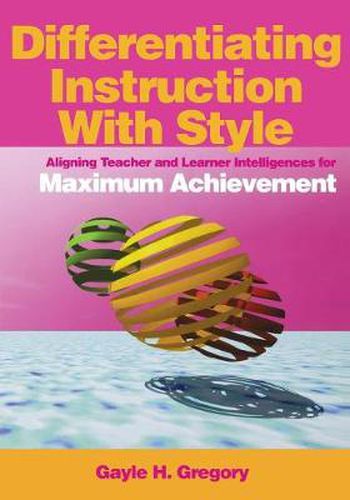Readings Newsletter
Become a Readings Member to make your shopping experience even easier.
Sign in or sign up for free!
You’re not far away from qualifying for FREE standard shipping within Australia
You’ve qualified for FREE standard shipping within Australia
The cart is loading…






The foundation of differentiated instruction is the teacher’s ability to understand student preferences in thinking styles, learning styles, and multiple intelligences and then to use that understanding to plan instruction for the diversity of learners in the classroom. This important new book from Gayle Gregory provides teachers with a bridge between theory and instructional practice.The book covers essential research and theory: core principles of brain-compatible learning; core theories from Jung, Gregorc, Kolb, McCarthy, Lowry, and others about learning styles; core theories from Costa, Gardner, Sternberg, Goleman, and others about intelligence; core taxonomies from Bloom, Quellmalz, Krathwohl, Williams, Eberle, and others about thinking and creativity. Crossing all categories are instructional, analytic, and planning tools, strategies, and templates for putting all that theory into classroom practice. For readers new to Gayle Gregory’s work on differentiated instruction, this is an ideal starting point. For readers who own Gayle’s prior volumes, this new work is a must.
$9.00 standard shipping within Australia
FREE standard shipping within Australia for orders over $100.00
Express & International shipping calculated at checkout
The foundation of differentiated instruction is the teacher’s ability to understand student preferences in thinking styles, learning styles, and multiple intelligences and then to use that understanding to plan instruction for the diversity of learners in the classroom. This important new book from Gayle Gregory provides teachers with a bridge between theory and instructional practice.The book covers essential research and theory: core principles of brain-compatible learning; core theories from Jung, Gregorc, Kolb, McCarthy, Lowry, and others about learning styles; core theories from Costa, Gardner, Sternberg, Goleman, and others about intelligence; core taxonomies from Bloom, Quellmalz, Krathwohl, Williams, Eberle, and others about thinking and creativity. Crossing all categories are instructional, analytic, and planning tools, strategies, and templates for putting all that theory into classroom practice. For readers new to Gayle Gregory’s work on differentiated instruction, this is an ideal starting point. For readers who own Gayle’s prior volumes, this new work is a must.